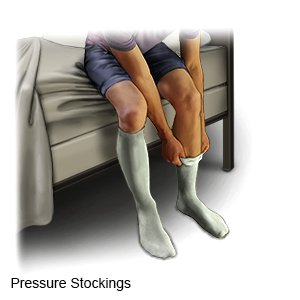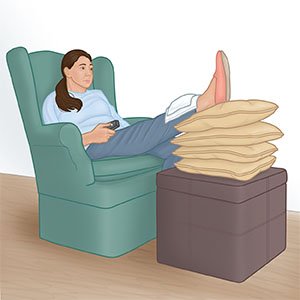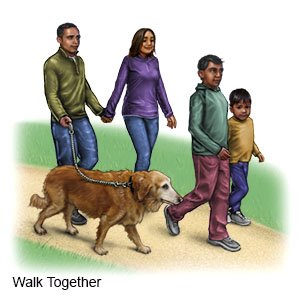Stasis Dermatitis
Medically reviewed by Drugs.com. Last updated on Aug 4, 2025.
What is stasis dermatitis?
Stasis dermatitis is a condition that develops when blood pools in your lower legs. It is caused by poor blood flow back to your heart.
What increases my risk for stasis dermatitis?
- Female gender
- Age 50 or older
- Family history of stasis dermatitis
- Heart problems, such as congestive heart failure
- Obesity
- Pregnancy
- Limited movement
What are the signs and symptoms of stasis dermatitis?
Signs and symptoms may develop over time. You may first notice itching and redness on your inner ankles. You also may have any of the following:
- Swelling in your lower legs and ankles
- Blue or brown spots on your skin
- Hard and swollen leg veins
- Skin that feels rough, bumpy, thick, or scaly
How is stasis dermatitis diagnosed?
Your healthcare provider may know you have stasis dermatitis by looking at your legs. Tell him or her when your signs and symptoms started. You may need any of the following tests:
- Blood tests may show if you have an underlying condition that is causing your stasis dermatitis.
- An ultrasound uses sound waves to show pictures on a monitor. An ultrasound may be done to show blood flow or blood clots in your veins.
- A skin tissue biopsy may be needed if you have an open wound. A sample of your wound is sent to the lab for tests.
Related medications
How is stasis dermatitis treated?
You may need medicines to help improve blood flow from your legs to your heart and decrease swelling.
How can I manage my symptoms?
- Wear pressure stockings. These tight elastic stockings put pressure on your legs. This improves blood flow and prevents blood from collecting in your legs.

- Elevate your legs above the level of your heart for 30 minutes, 4 times a day. This will help decrease swelling and pain. Prop your legs on pillows or blankets to keep them elevated comfortably.

- Exercise regularly. Ask your healthcare provider about the best exercise plan for you. Exercise improves the blood flow in your legs.

- Maintain a healthy weight. Ask your healthcare provider what a healthy weight is for you. Ask him or her to help you create a weight loss plan if you are overweight. This will help improve your blood flow.
- Eat a variety of healthy foods. Healthy foods include fruits, vegetables, whole-grain breads, low-fat dairy products, beans, lean meats, and fish. You may need to eat foods that are low in salt to help decrease swelling in your legs.

- Apply lotions or creams to the area. These help keep your skin moist and decrease itching. Apply the lotion or cream right after a lukewarm bath or shower when your skin is still damp. Use products that do not contain a scent.
- Do not scratch your legs. Your skin can break open if you scratch. This can lead to sores or an infection.
Call your local emergency number (911 in the US) if:
- You feel lightheaded, short of breath, and have chest pain.
- You cough up blood.
When should I seek immediate care?
- Your leg feels warm, tender, and painful. It may look swollen and red.
Call your doctor if:
- You have a fever.
- Your pain is not getting better, even with treatment.
- You have new or worse open sores.
- Your sores are draining pus.
- Your movement is limited.
- You have questions or concerns about your condition or care.
Care Agreement
You have the right to help plan your care. Learn about your health condition and how it may be treated. Discuss treatment options with your healthcare providers to decide what care you want to receive. You always have the right to refuse treatment. The above information is an educational aid only. It is not intended as medical advice for individual conditions or treatments. Talk to your doctor, nurse or pharmacist before following any medical regimen to see if it is safe and effective for you.© Copyright Merative 2025 Information is for End User's use only and may not be sold, redistributed or otherwise used for commercial purposes.
Further information
Always consult your healthcare provider to ensure the information displayed on this page applies to your personal circumstances.
